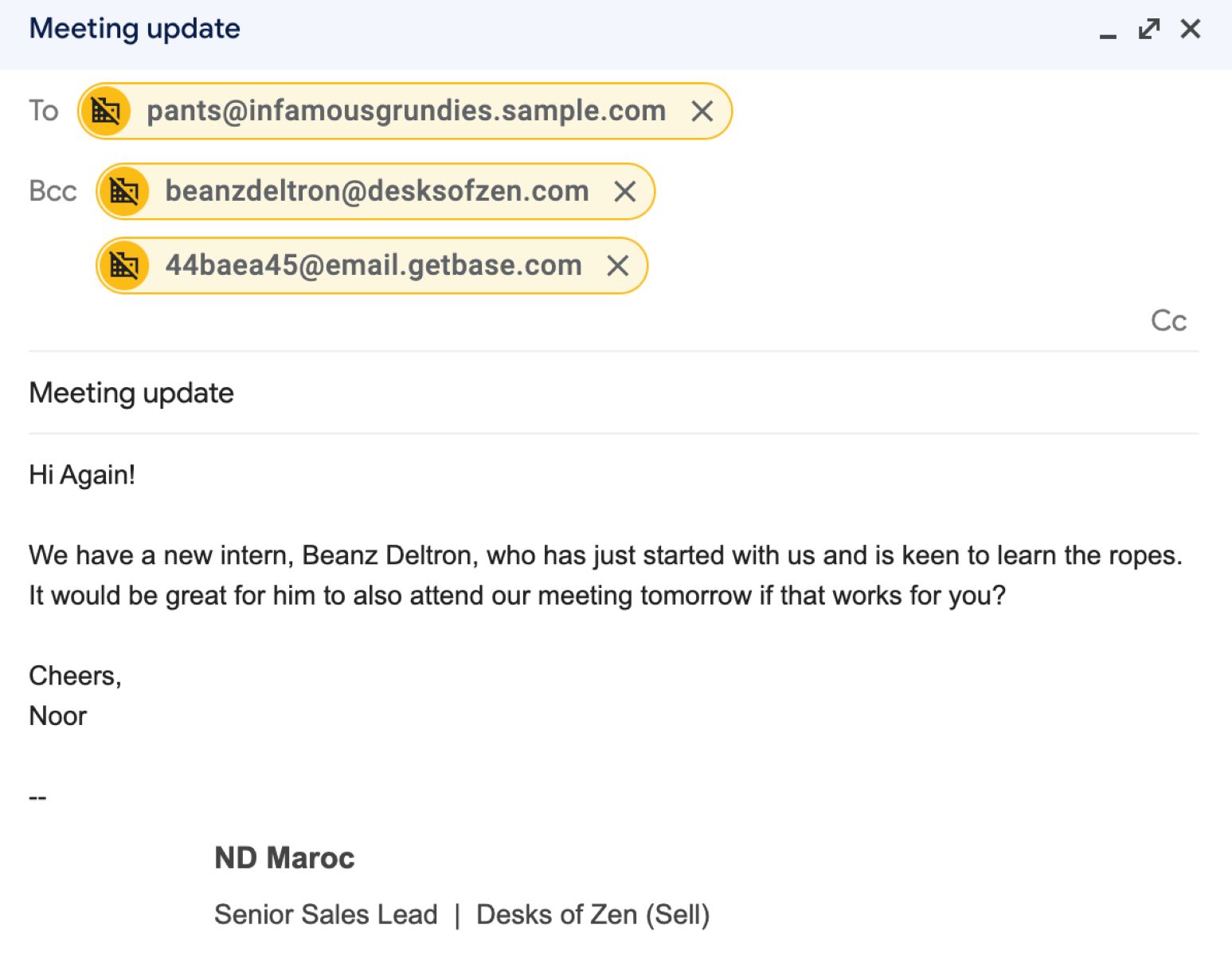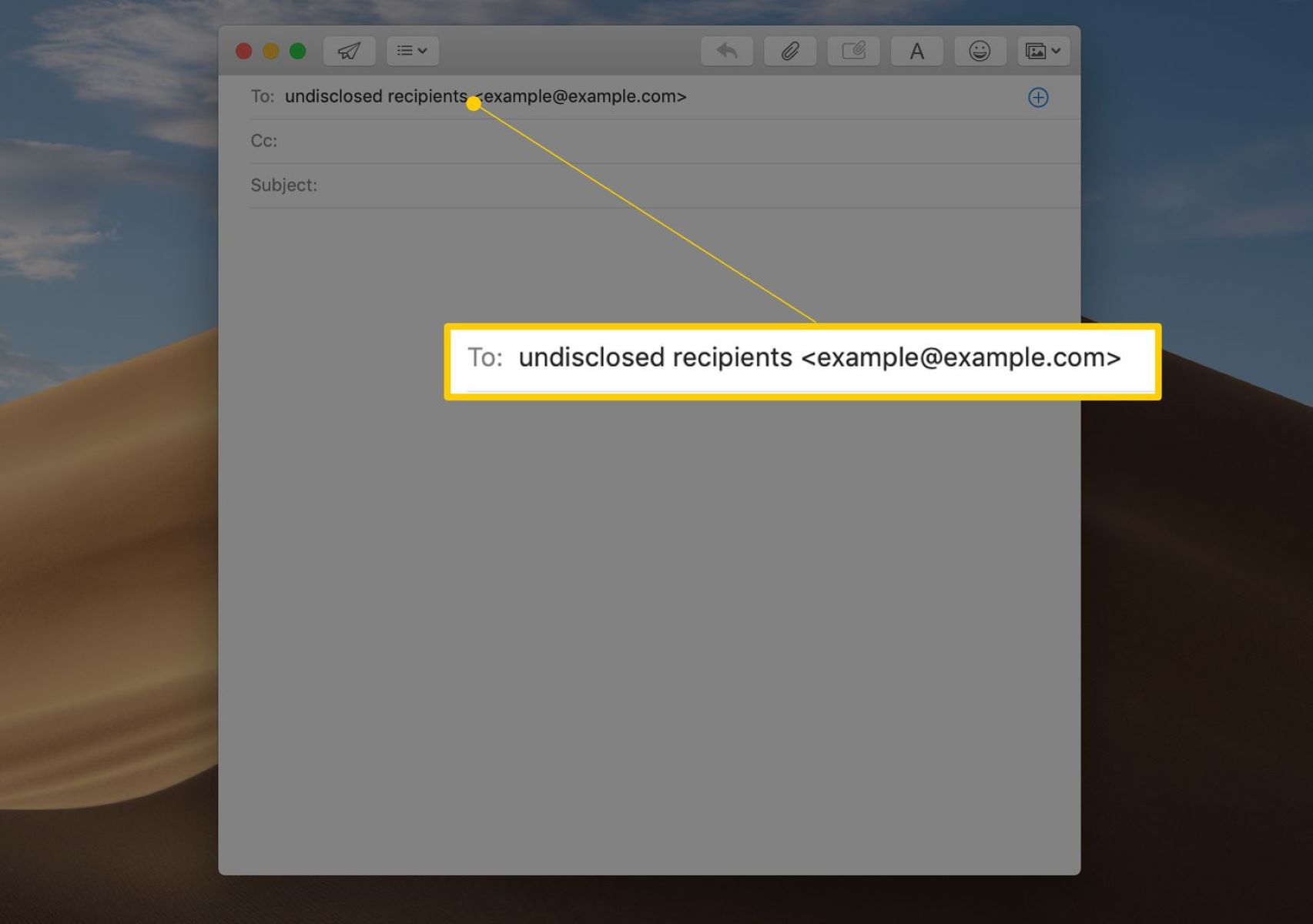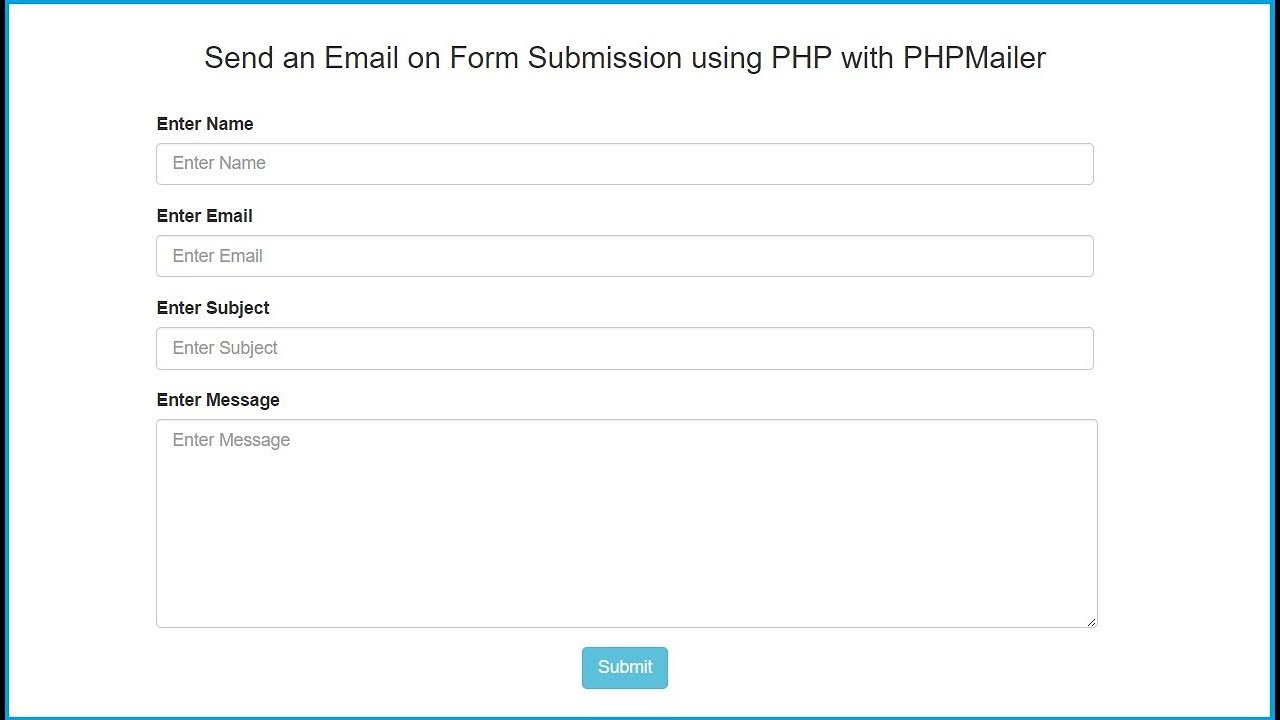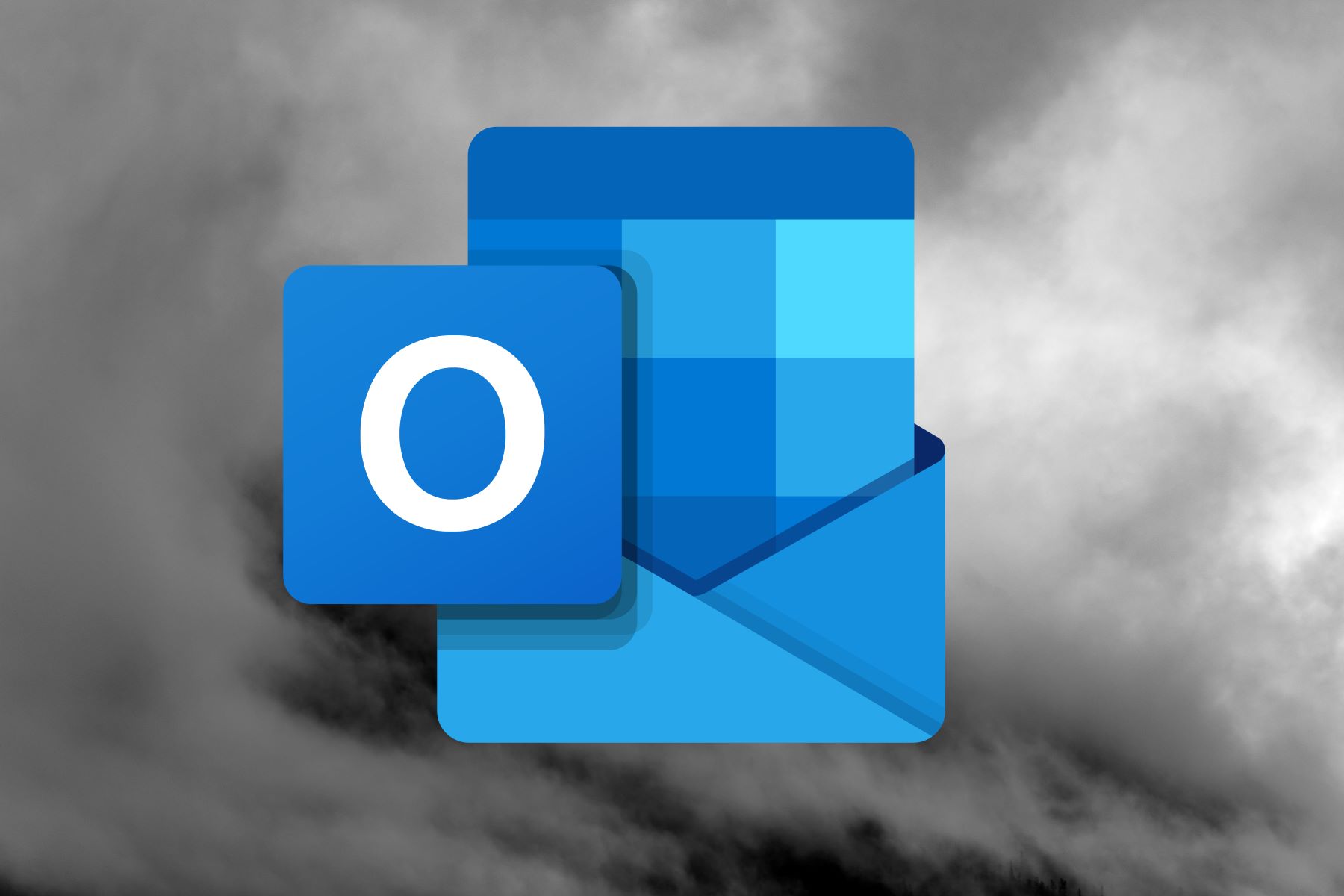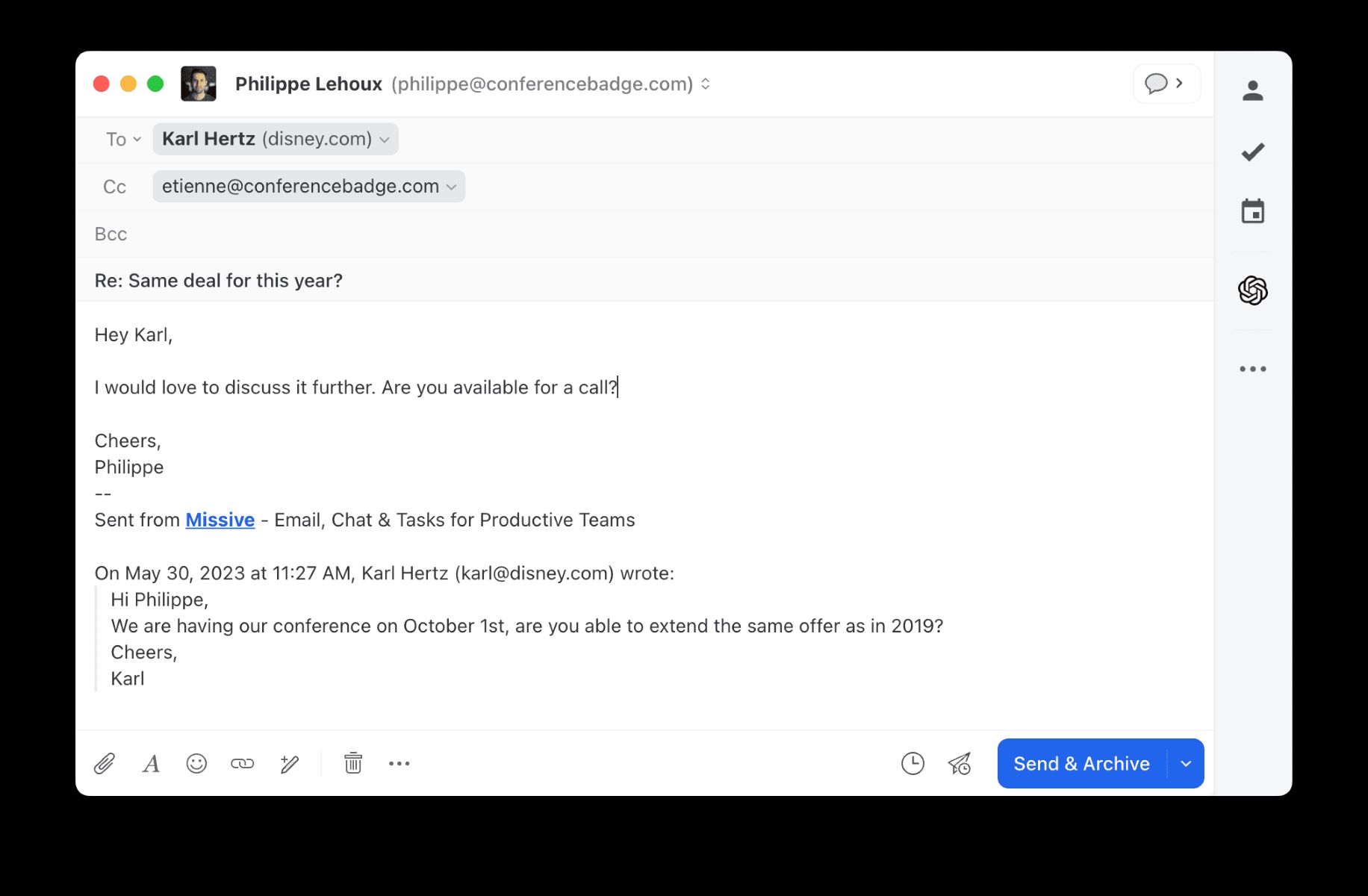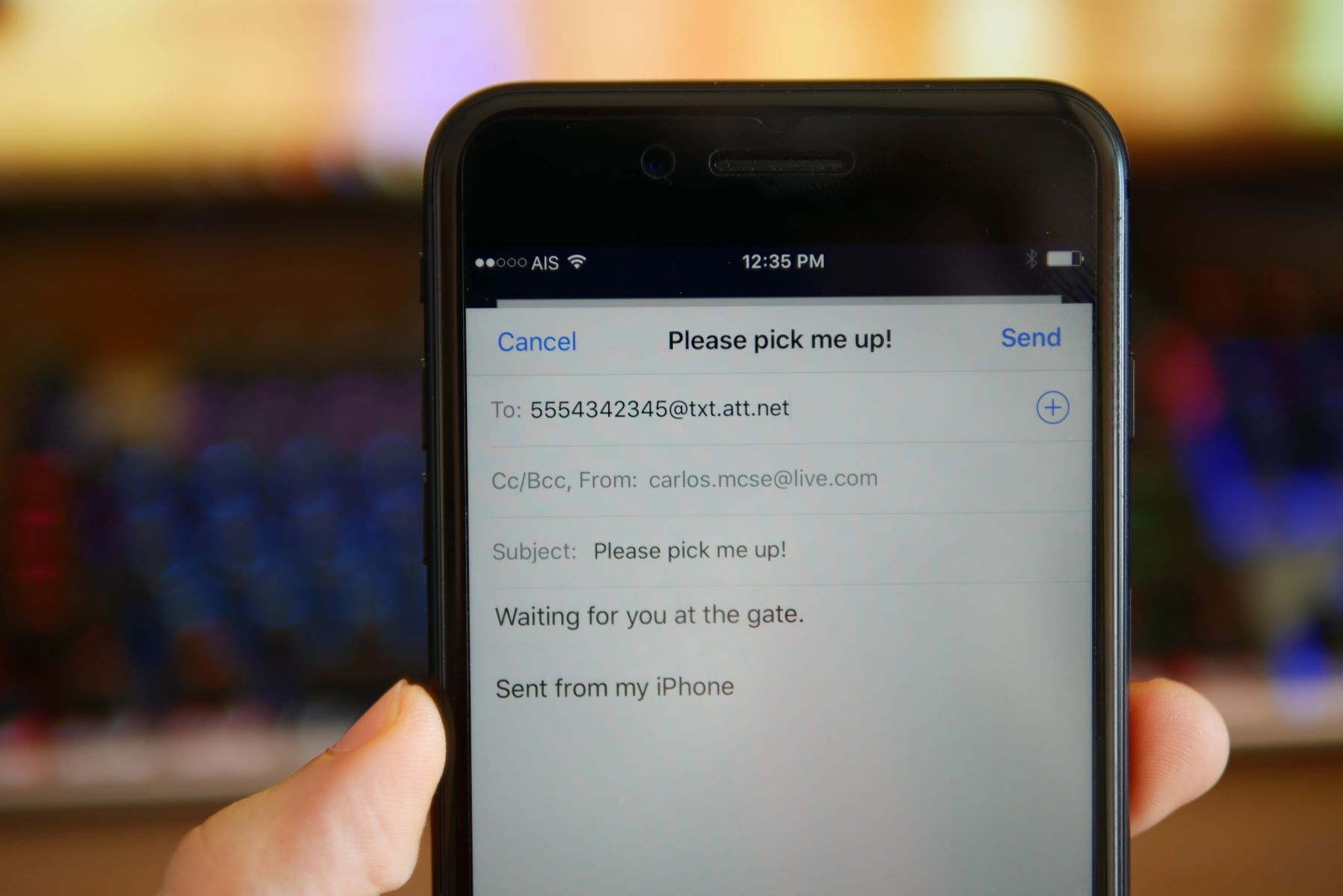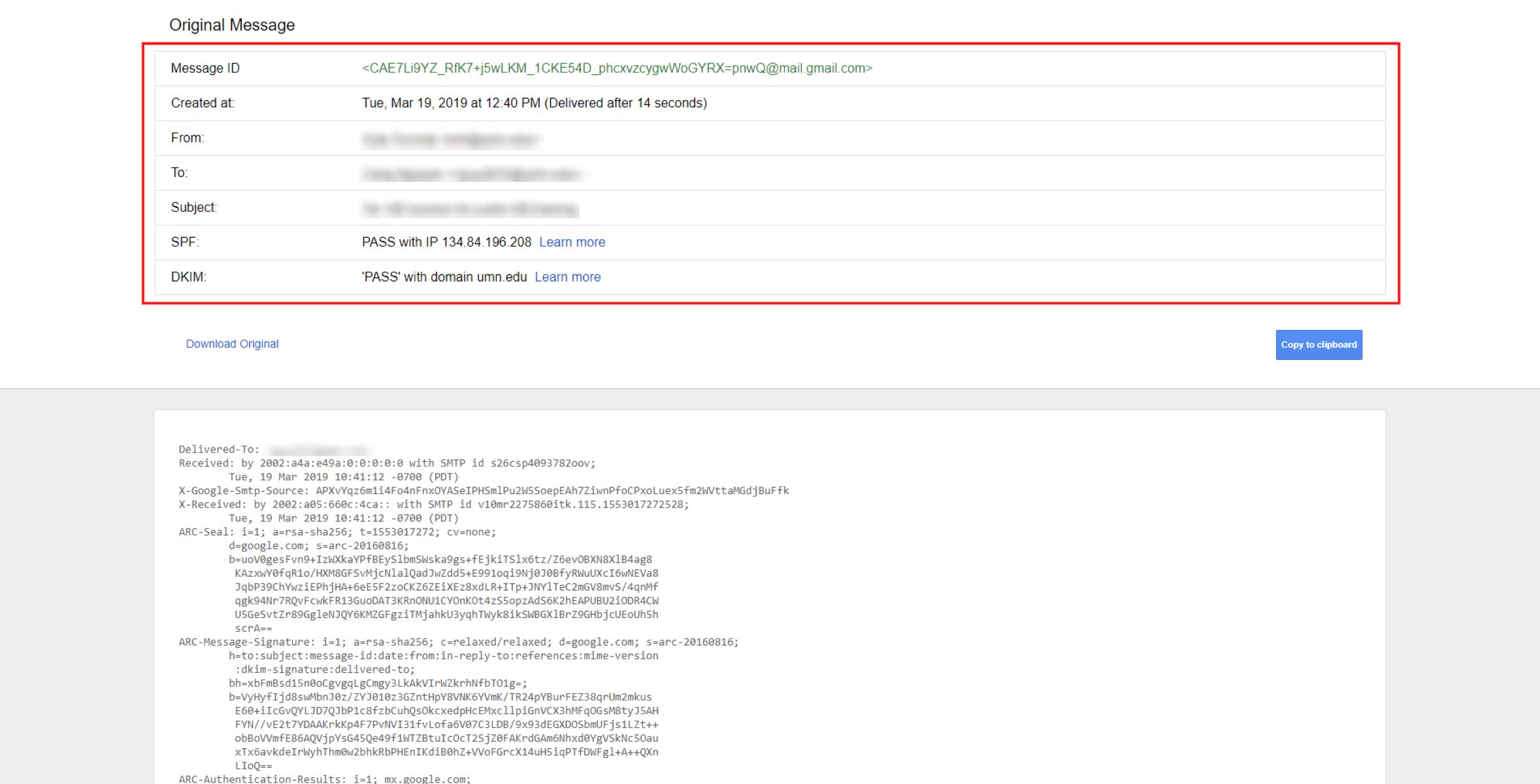Introduction
Are you confused about what Bcc on email means and how it works? Don’t worry; you’re not alone. Bcc, short for “Blind Carbon Copy,” is a useful feature offered by email clients that allows you to send a copy of an email to recipients without the other recipients knowing. Essentially, it allows you to send an email to multiple recipients while maintaining their privacy.
With the widespread use of email in both personal and professional contexts, it’s important to understand how to use Bcc properly to ensure efficient and effective communication. Whether you’re working on a team project, organizing an event, or simply sending a message to a group of friends, knowing how to utilize Bcc can help streamline your email communication.
In this article, we will delve into the world of Bcc and discuss its functionality, benefits, and best practices. By the end of this article, you will have a comprehensive understanding of how Bcc works and when and why you should use it in your email communications.
So, let’s get started and unravel the mystery behind Bcc!
What is Bcc?
Bcc stands for “Blind Carbon Copy.” It is an essential email feature that allows you to send a copy of an email to recipients without the other recipients knowing. In simpler terms, Bcc enables you to send an email to multiple recipients while keeping their email addresses hidden from one another.
When you add recipients to the Bcc field, their email addresses are not visible to the other recipients in the To or Cc fields. In other words, Bcc recipients remain unknown to everyone, including the initial recipients and subsequent Bcc recipients.
The Bcc field serves as a way to discreetly include additional recipients in an email conversation without revealing their identities. It provides an extra layer of privacy and confidentiality, making it particularly useful for certain situations.
It’s important to note that while the Bcc recipients’ email addresses remain hidden, they can still see the email content and any attachments included. Bcc is solely used to protect the privacy and anonymity of recipients, not to hide the email’s content.
Now that you have a clear understanding of what Bcc stands for and its basic functionality, let’s dive deeper into how it actually works.
How does Bcc work?
Bcc works by allowing you to add recipients to the Bcc field when composing an email. These recipients will receive a copy of the email without their email addresses being visible to others. To understand how Bcc works, let’s break down the process step by step:
- Compose a new email: Start by creating a new email in your email client or platform.
- Add recipients: Enter the primary recipients’ email addresses in the “To” field, as you would normally do when sending an email. These are the individuals who will be able to see the email addresses of other recipients.
- Add Bcc recipients: In the Bcc field, enter the email addresses of the recipients you want to include but keep hidden from others. Remember, these recipients will receive a copy of the email without others being able to see their email addresses. You can add multiple email addresses by separating them with commas.
- Compose the email: Write your message, attach any necessary files, and format the email as desired. It’s important to note that Bcc recipients will be able to see the email content and attachments, but not the email addresses of other recipients.
- Send the email: Once you have composed your email and reviewed it for accuracy, you can click the “Send” or “Send Email” button to send the message.
When the email is sent, the recipients added to the Bcc field will receive their own copy of the email, just like the primary recipients. However, their email addresses will remain hidden, ensuring their privacy.
It’s crucial to be cautious and double-check the recipient list when using Bcc, as once the email is sent, you cannot retract or edit it. Additionally, it’s good email etiquette to inform Bcc recipients that you are including them in the email, as it enhances transparency and builds trust within the communication.
Next, let’s explore the reasons why you may want to utilize Bcc in your email communications.
Why use Bcc?
The Bcc feature offers several benefits that make it a valuable tool in email communications. Understanding why and when to use Bcc can greatly enhance your email efficiency and privacy. Here are some key reasons why you should consider using Bcc:
1. Privacy and confidentiality:
By using Bcc, you can ensure that the email addresses of all recipients remain private. This is particularly important when sending emails to a large group of people who may not know each other. Bcc eliminates the risk of accidentally sharing sensitive contact information without the recipients’ consent.
2. Protecting recipient identities:
Bcc provides a way to protect the identities of recipients who may not want their email addresses shared with others. This is useful, for example, when sending emails to a mailing list or organizational group where individual privacy is a concern.
3. Preventing reply-all storms:
Using Bcc can help prevent “reply-all storms,” where recipients start replying to the entire group, inadvertently creating a deluge of email responses. By keeping recipients’ identities hidden, Bcc reduces the likelihood of this happening and helps maintain a focused and organized email conversation.
4. Professionalism and courtesy:
When sending mass emails or forwarding conversations, using Bcc can demonstrate professionalism and courtesy. It shows that you respect your recipients’ privacy and understand the importance of keeping their email addresses confidential.
5. Organization and efficiency:
Bcc allows you to include relevant stakeholders or team members in an email without cluttering the recipient list. This helps streamline communication and ensures that only the necessary individuals are directly involved in the conversation, reducing confusion and improving efficiency.
Now that you understand the reasons for using Bcc, let’s explore the difference between Bcc and Cc and when each should be used.
Difference between Bcc and Cc
The Bcc (Blind Carbon Copy) and Cc (Carbon Copy) fields serve different purposes in email communications. Understanding the differences will help you decide when to use each option effectively. Here are the key distinctions between Bcc and Cc:
Bcc (Blind Carbon Copy):
- Visibility: When you use Bcc, the email addresses of recipients in the Bcc field are invisible to all other recipients, including those in the To and Cc fields. Only the sender knows who received the email.
- Privacy: Bcc provides a higher level of privacy, ensuring that recipients’ email addresses remain confidential and hidden from others.
- Recipient Reply: Bcc recipients cannot see the other recipients in the email. If they choose to reply, the response only goes to the sender, and the other recipients will not be aware of the reply.
Cc (Carbon Copy):
- Visibility: When you use Cc, all recipients in the Cc field can see each other’s email addresses. This creates transparency regarding who else received the email.
- Less Privacy: Cc does not provide the same level of privacy as Bcc, as the email addresses of all recipients in the Cc field are visible to other recipients.
- Recipient Reply: Cc recipients can see the other recipients in the email. If they choose to reply, the response goes to all recipients listed in the Cc field, enabling a group discussion.
The choice between using Bcc and Cc depends on the specific communication needs and privacy considerations. If you want to protect the privacy of recipients, prevent reply-all storms, or keep recipients’ identities confidential, Bcc is the preferred option. On the other hand, if transparency, open communication, and group collaboration are important, Cc is more appropriate.
Now that you understand the differences between Bcc and Cc, let’s explore the situations where using Bcc is recommended.
When to use Bcc?
The Bcc (Blind Carbon Copy) feature should be used in specific situations where privacy, confidentiality, or organizational efficiency is important. Understanding when to utilize Bcc can greatly improve your email communication. Here are some scenarios where using Bcc is recommended:
1. Sending mass emails:
When sending an email to a large group of recipients who may not know each other, using Bcc is crucial. This protects the privacy of all recipients by keeping their email addresses hidden from others.
2. Protecting recipient identities:
If you are sending an email where the identity of certain recipients needs to be kept confidential, such as when dealing with sensitive topics or personal information, using Bcc ensures that their email addresses remain private.
3. Preventing reply-all storms:
When sending an email to a group or mailing list, using Bcc can help prevent reply-all storms. These occur when recipients start replying to the entire group, flooding inboxes with unnecessary responses. By keeping recipients’ identities hidden, Bcc reduces the risk of such situations.
4. Forwarding conversations:
If you need to forward a conversation or email thread to others while preserving the privacy of the original sender and recipients, using Bcc is the ideal option. It allows you to share the information without disclosing the email addresses of previous participants.
5. Collaborating with select individuals:
When collaborating on a project or sharing information with a specific group of individuals without involving everyone in the conversation, Bcc can be used to keep the recipient list focused and targeted. This simplifies communication and helps recipients understand their direct involvement.
Remember, using Bcc effectively requires careful consideration of the recipients and their privacy. It is also essential to inform Bcc recipients that they have been included in the email to maintain transparency and build trust within the communication.
Now that you know when to use Bcc, let’s explore some tips for using it effectively.
Tips for using Bcc effectively
Using the Bcc (Blind Carbon Copy) feature correctly can enhance your email communication and ensure the privacy and effectiveness of your message. Here are some tips to help you use Bcc effectively:
1. Be mindful of privacy:
Always consider the privacy of your recipients when using Bcc. Only include individuals who need to receive the email without disclosing their email addresses to others. Respecting privacy builds trust and maintains the integrity of your communication.
2. Inform Bcc recipients:
It is a good practice to inform Bcc recipients that they have been included in the email. This ensures transparency and avoids confusion. You can add a note at the beginning or end of the email, acknowledging their inclusion and providing any necessary context.
3. Double-check recipient list:
Before sending an email with Bcc recipients, double-check your recipient list to ensure that the right individuals are included in the respective fields. Avoid any errors or accidental exclusions that could impact the communication outcome.
4. Use descriptive subject lines:
When using Bcc, it’s important to use clear and descriptive subject lines. This helps recipients understand the relevance and purpose of the email, especially if they are not aware of other recipients involved. Clear subject lines enhance efficiency and encourage timely responses.
5. Avoid sensitive content:
Since Bcc recipients can see the email content and attachments, be cautious about the content you include. Avoid sharing highly sensitive or confidential information in emails that involve Bcc recipients if it could compromise privacy or trust.
6. Manage replies appropriately:
Be aware that replies from Bcc recipients will only go to the sender and not to other recipients. If you want to foster group discussion or ensure that all recipients are aware of the responses, consider using Cc or explicitly instruct all recipients to reply to all.
7. Understand email client limitations:
Be familiar with the limitations or restrictions of your specific email client or platform when using Bcc. Different email clients may display Bcc fields differently, and recipients in some clients may be able to identify Bcc recipients. Stay informed and adjust your email practices accordingly.
By following these tips, you can leverage the Bcc feature effectively, ensuring privacy, clarity, and streamlined communication in your email exchanges.
Now that we have explored the tips for using Bcc effectively, let’s summarize the key points we have discussed so far.
Conclusion
Understanding Bcc (Blind Carbon Copy) and its functionality is essential for efficient and privacy-conscious email communication. Bcc allows you to send an email to multiple recipients while hiding their email addresses from each other. By using Bcc, you can protect the privacy and confidentiality of recipients, prevent reply-all storms, and maintain organization in your email conversations.
In this article, we’ve explored what Bcc is and how it works. We’ve discussed the differences between Bcc and Cc, highlighting when each option should be used. We’ve also covered the situations where using Bcc is recommended, such as sending mass emails, protecting recipient identities, and collaborating with select individuals.
Additionally, we provided valuable tips for using Bcc effectively, including being mindful of privacy, informing Bcc recipients, double-checking recipient lists, using descriptive subject lines, avoiding sensitive content, managing replies appropriately, and understanding email client limitations. By following these tips, you can make the most of the Bcc feature in your email communication.
Remember, when using Bcc, it’s important to strike a balance between privacy and transparency. Use it responsibly and respect the privacy of recipients, while also maintaining open and effective communication.
Now that you have a comprehensive understanding of Bcc, take advantage of this powerful email feature to enhance your communication, protect privacy, and streamline your email exchanges.







